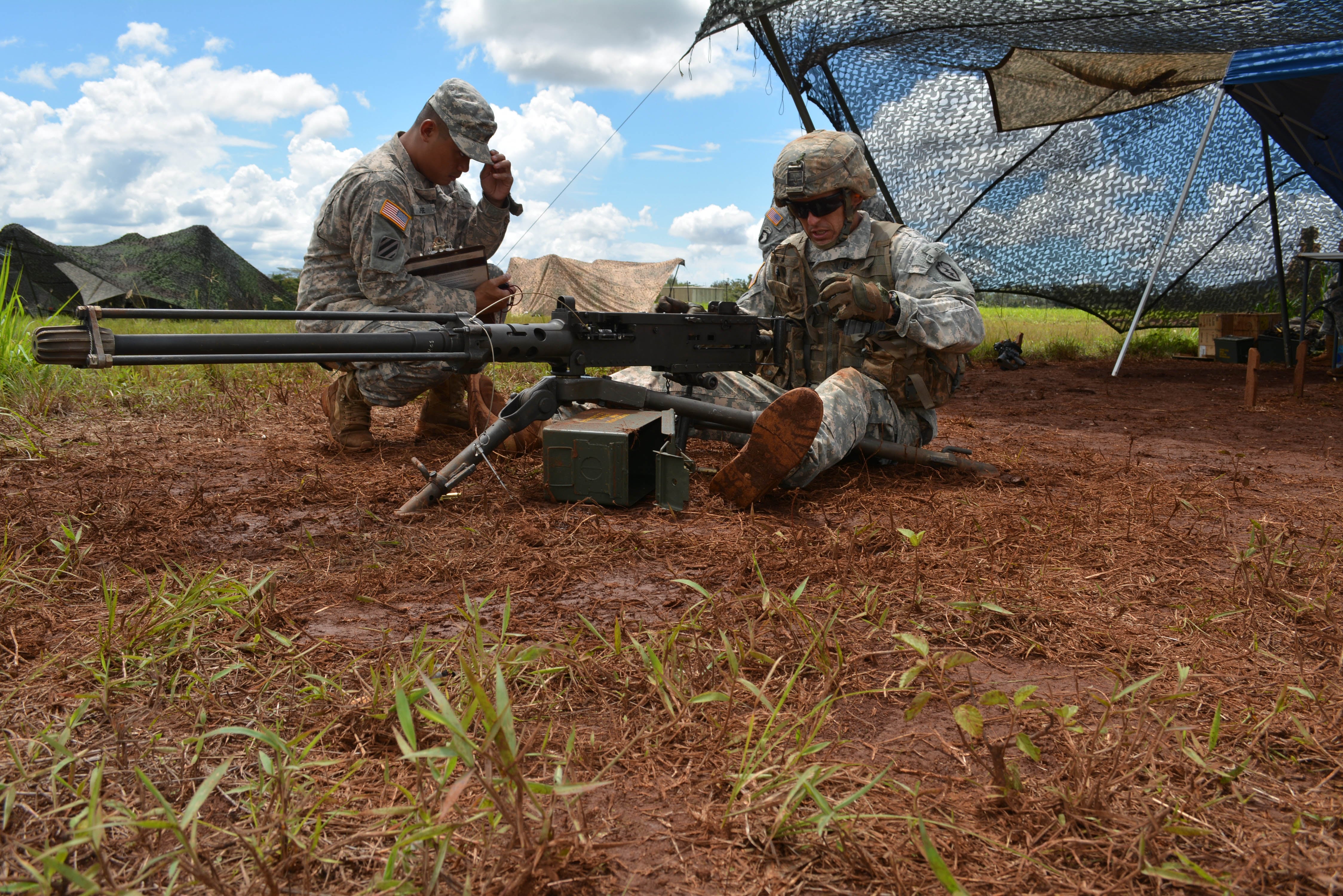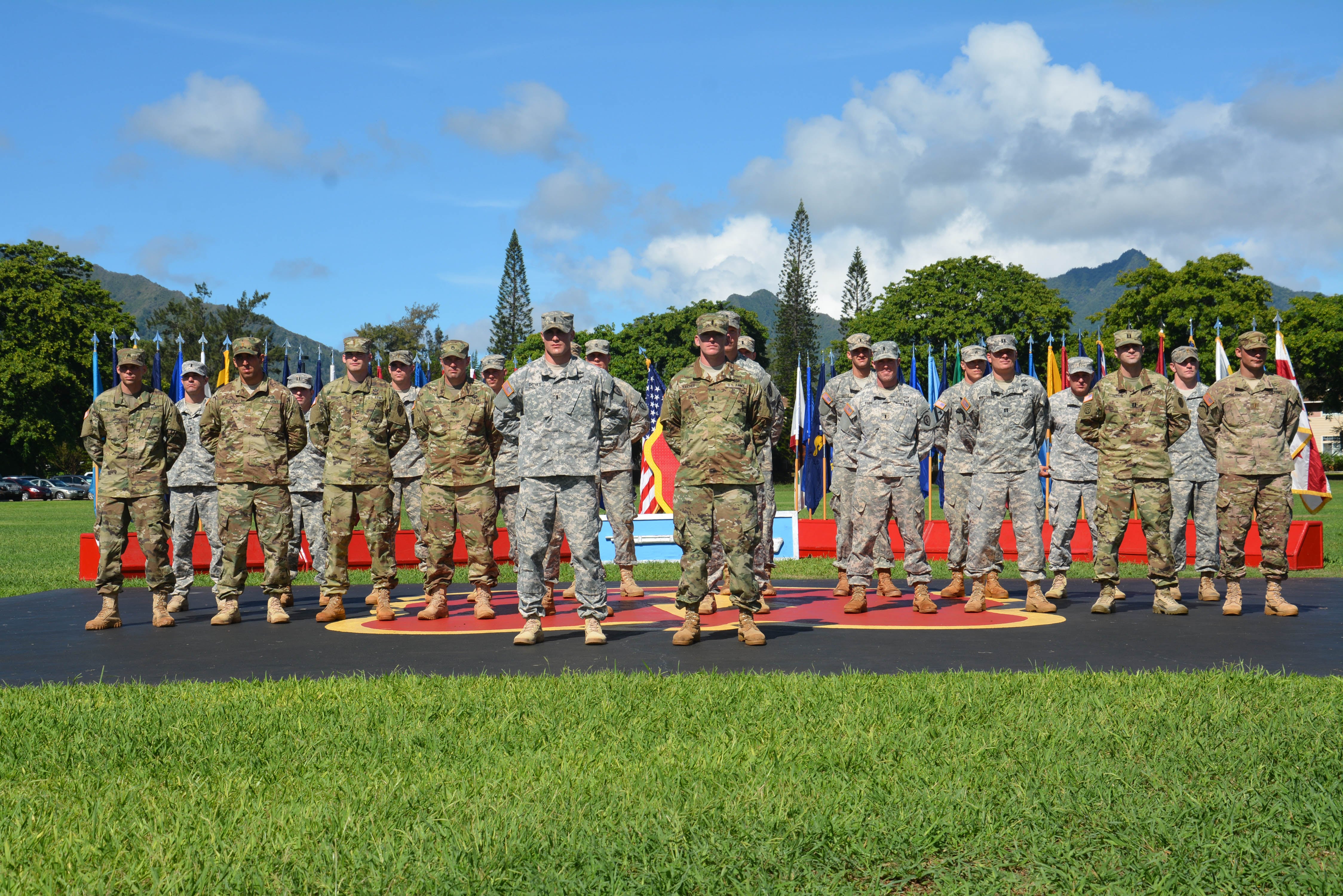Infantrymen gunning for the coveted Expert Infantryman Badge will soon face a tougher, more focused test.
The Army on Dec. 1 will roll out across the force changes to the decades-old EIB test. It has already run one pilot with a brigade combat team, and has planned three more by the end of October.
The new test "is going to develop our proficiency in our MOS and attest to our ability to perform our wartime mission, which is to overmatch and destroy any opposing force that we might encounter," said Command Sgt. Maj. Wilbert Engram, the senior enlisted soldier for the U.S. Army Infantry School.
Engram said the new EIB test will be "more focused, more concentrated, and it'll get these guys back to the basics."
The new test will include:
• A new culminating event that honors the very first grunt to earn the EIB.
• Tougher PT standards.
• Mandatory tasks each soldier must complete.
• And fewer chances to fail before being dropped from the test.
The changes to EIB testing come as the Army transitions out of more than a decade of back-to-back combat deployments and the back-breaking optempo many experienced during the height of the wars in Iraq and Afghanistan.
"A lot of units were not conducting the EIB test because they just didn't have time to," Engram said.
EIB testing was last changed in 2008 so that the tests could be run by battalions instead of the more traditional brigade- or division-level tests, Engram said. Back then, it was more important that a soldier complete the task, and there was less emphasis on how a soldier did it. Under the latest revisions, graders will pay close attention to proper protocol. It's not just a matter of putting together a .50 cal; it's whether a soldier can do it correctly.
"Earning an EIB is not easy by any stretch of the imagination," Engram said. But it's also "a matter of pride" and can boost an infantryman's chances at promotion.
The perks, especially in a drawdown environment can be huge. An EIB is worth 10 30 promotion points. It also carries weight in a centralized promotion board, Engram said.
"If a soldier is an infantryman, it is nearly impossible to get promoted to E-8 or higher without having that Expert Infantryman Badge," Engram said.
The 11-series, or infantry, military occupational specialty is the largest in the Army. There are about 100,900 infantrymen in all three Army components. Of those, about 62,000 are in the active Army.

A soldier performs a function check, clears, loads, reduces stoppage, unloads, and clears a .50 caliber machine gun during the EIB Testing Aug. 25 on Schofield Barracks, Hawaii.
Photo Credit: Staff Sgt. Carlos Davis/Army
The new EIB test spans five days. Candidates must qualify expert on the M4 carbine before showing up for the test; active-duty soldiers must have qualified within six months of the test, while National Guard or Army Reserve soldiers must have qualified within 12 months.
The EIB testing week kicks off with the Army Physical Fitness test, followed by day and night land navigation. Both events are must-pass events. Soldiers who fail are immediately dropped from the EIB test.
Soldiers then move into individual lanes — weapons, medical and patrol — and they have to complete 10 timed tasks in each lane.
The testing ends with a 12-mile road march and the new Objective Bull culminating event, which requires soldiers to navigate a 100-meter lane to treat and evacuate a casualty.
Tough first pilot
Sgt. Geoffrey Bruno, a brigade operations assistant in 2nd Stryker Brigade Combat Team, 25th Infantry Division, was one of the soldiers to earn the EIB during the first pilot test at Schofield Barracks, Hawaii. He was in the minority.
Out of 760 participants, only 22 earned the badge. That's a 3 percent success rate.
In fiscal 2014, 8,894 soldiers from 22 units tested for the EIB. Of those, 1,176, or 13.2 percent, passed. And that was a bad year, Engram said. The pass-rate is historically around 50 percent.
Earning the badge was "a huge relief," Bruno said. It was the 24-year-old's third try; he was dropped the first two times for failing the land navigation tasks.
"I was overwhelmed, really happy to get it," he said. "The EIB sets you apart. It's the Expert Infantryman Badge. It's something I'm sure every infantryman strives for. It's something you need not only to progress in this career, but something that shows other soldiers you know how to do your job."
Most units typically run one EIB test a year, although Engram expects some may be able to test twice a year now that the Army's deployment optempo has eased.
Thirty units will test this fiscal year, Engram said. The final numbers are still being tallied, as the fiscal year doesn't end until Sept. 30.
Maj. Gen. James Rainey, who until this summer was the Infantry School commandant, asked Engram to review the EIB test.
"I looked at it, and from my experience, having conducted that test, I realized the outcomes-based test was not a good event," said Engram, who pushed for the new performance-based approach.
The first pilot took place Aug. 24-28 with soldiers from 2nd Stryker Brigade Combat Team, 25th Infantry Division.
The next test will be Sept. 7-11 in Kuwait with 3rd BCT, 4th Infantry Division.

Twenty-two Expert Infantryman Badge candidates receive their EIBs on Aug. 28 on Schofield Barracks. The first pilot had only a 3 percent pass rate.
Photo Credit: Staff Sgt. Carlos Davis/Army
Soldiers from 1st SBCT, 25th Infantry Division at Fort Wainwright, Alaska, will test Sept. 21-25, and soldiers from 3-2 SBCT, 7th Infantry Division at Joint Base Lewis-McChord, Washington, will test Oct. 5-9.
All four brigades volunteered to run the new test, Engram said.
Engram visited Schofield Barracks to observe 2nd SBCT, 25th Infantry run its test.
"They loved the new test, but admittedly, those guys had gotten so far away from a performance-based test that they realized how badly they need to work on that stuff," Engram said.
The unit is determined to master the test, however, and will run another EIB test in mid-September, he said.
Command Sgt. Maj. Jeffrey Sweezer, the senior enlisted soldier for 2nd SBCT, 25th Infantry, said the transition to the new version of the test went smoothly.
The test itself went very well, and it was "acceptable" compared with previous tests, he said.
"What was not acceptable was the amount of soldiers executing the three days of lane training and the results at the end," Sweezer said.
More than half the soldiers didn't make it past the PT test, he said.
"The 80 points per event that they have to have to pass to move on makes a difference," Sweezer said. "That's an extra four or five reps on the push up or sit up or 30 seconds faster on your run."
This is why the brigade will run a second EIB test Sept. 14-18, which is unusual because units typically test just once a year.
"After deploying and deploying, there's not been that much focus on the EIB at certain levels," Sweezer said. "For example, this brigade hasn't done one for probably two years. After years of combat, some skills we're not as proficient at as we think we are. That's why we're doing this again."
The new test also requires soldiers to know how to complete each task in a specific way, he said.
"The soldiers, because they're in sequence, it's by the numbers, it's the little things," Sweezer said. "It could be bad habits. It's a lot of muscle memory, perishable skills that we haven't focused on because of optempo and deployments."
His soldiers also were challenged by severe thunderstorms and flash flood warnings throughout the testing week, he said.
Ultimately, the EIB is "not meant for everybody," he said. "That's excellence, that's mastery of your infantry craft. I had officers, NCOs and lower enlisted that just didn't make it."
While 22 EIBs out of 760 candidates isn't a large number, Sweezer said his soldiers received good, quality training. Even about 300 non-infantry soldiers in the brigade were trained on the tasks, he said.
"That's over 1,000 soldiers in the brigade that went through and did that training," Sweezer said. "A lot of people say, 'hey, you only got 22 EIBs,' but if you look at the overall big picture, it's about readiness."
To prepare for his third shot at the EIB, Bruno trained as much as he could on land navigation. He also practiced on as many weapon systems as he could leading up to the test.
He aced the land nav test this time around, finding all four points in both the day and night portions.
Bruno said he liked the new test, despite struggling with the weather.
"It's hard to move around weapon pieces when our hands are all pruned up or soaked," he said. "Not only that, you're also shaking because you're cold. You're just drenched."
The toughest part of the test for Bruno was the road march, he said.
"I'm a pretty decent rucker, but that ruck march, for some reason, especially coming around mile 11, I was struggling, thinking I wasn't going to make it," he said.
Objective Bull was another challenge, Bruno said.
"It was an even bigger gut check, especially after the foot march," he said. "You're tired, your legs are hurting if not cramping, and now you have to work on a casualty, get him on a Skedco and drag him. It was definitely a gut check."
Michelle Tan is the editor of Army Times and Air Force Times. She has covered the military for Military Times since 2005, and has embedded with U.S. troops in Iraq, Afghanistan, Kuwait, Haiti, Gabon and the Horn of Africa.
